Art and Love at the Edge of the World
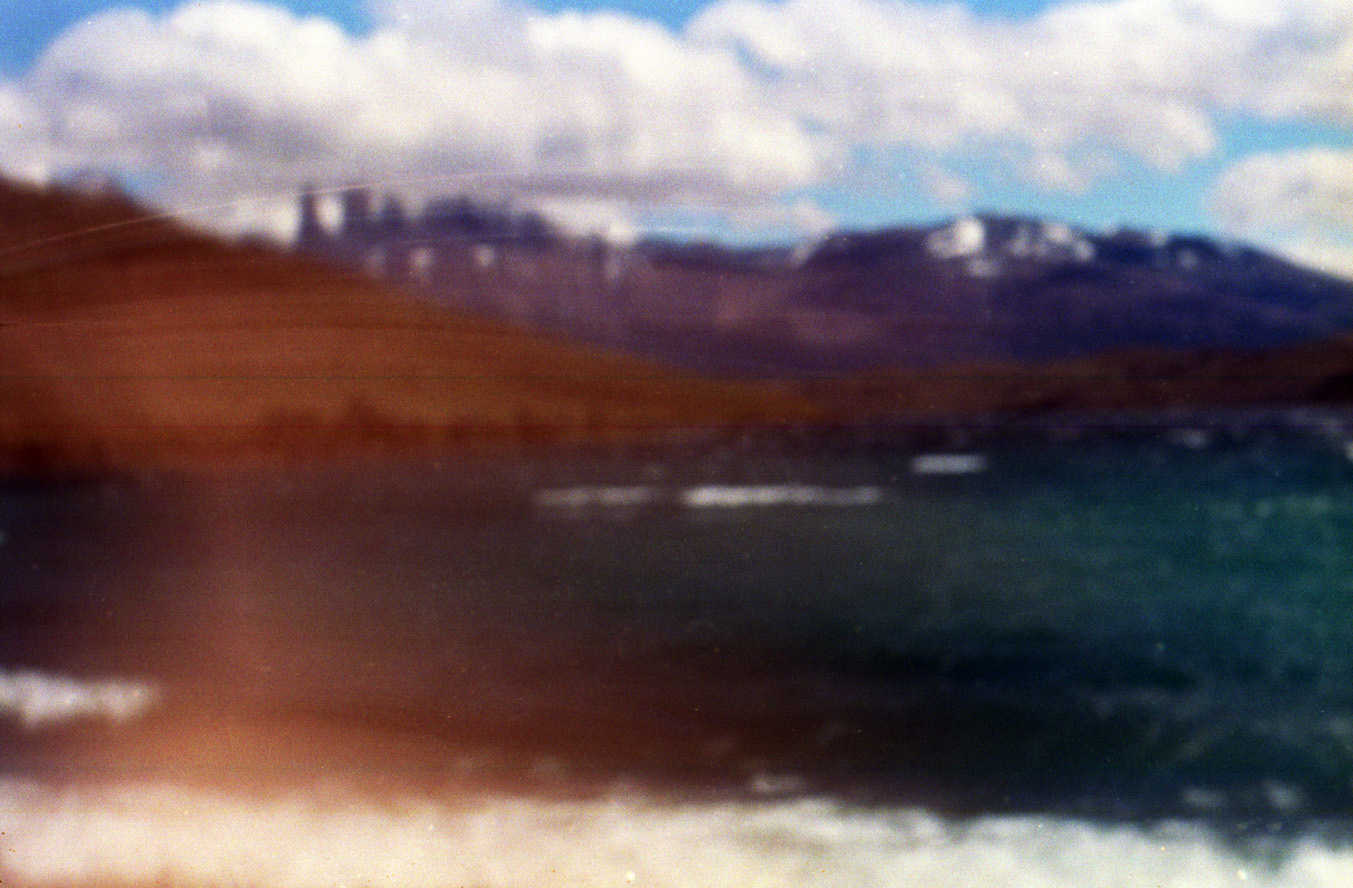
Art and Love at the Edge of the World
Discovering Patagonia & Chile
Words & Analog Photography by Edie Sunday
Raised by hunters and fishermen, I have a symbiotic relationship with nature. Although I never could bring myself to hunt or fish, my early experiences of my father teaching me how and read trails and find fossils and arrowheads left a lasting imprint on me. I feel the most at home outside, and I spent most of my childhood and adolescence wandering alone in the woods behind my house—collecting rocks, antique coke cans, and pressing flowers. At 27, things are mostly the same. I long for open spaces, freedom, and privacy. Beauty is a bonus.
Every year I get the same itch to leave and go as far away as possible, to reconnect with myself after a year of being a student, teaching assistant, psychotherapist, and researcher. This year I chose to escape to the mythical Chile, and to bring my partner in life along with me.
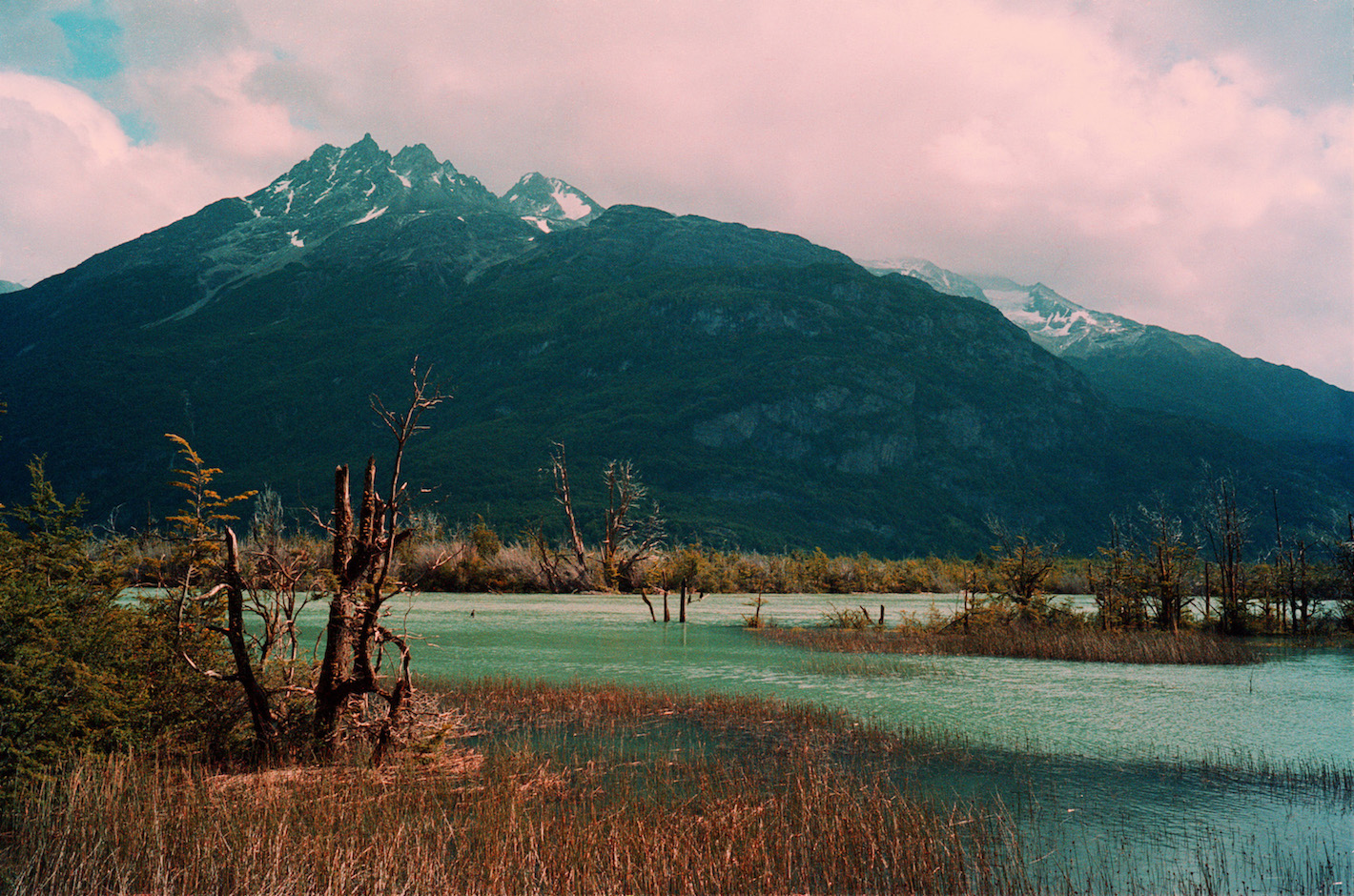
Chile
Chile radiates a beauty that can hardly be described in words. I was drawn to the challenge of navigating a country that encompasses 291,933 miles and to seeing the diverse landscapes of the country. However, I quickly realized that two weeks (all the time a graduate student has) was not long enough to traverse the entirety of the country. Not even close, so a decision had to be made.
My boyfriend is notorious for not participating in planning of our trips but rather being my ride or die who comes along with me on any journey—no matter how insane—and enjoys being surprised by what our travels present to him. He really never knows what he is getting himself into, and I admire that kind of openness. So—how did we decide on Patagonia with all that Chile has to offer? I showed him a photo of Torres del Paine next to a photo of the Atacama Desert. He pointed at the photo of Torres del Paine, not knowing where it was or what it meant to get there.
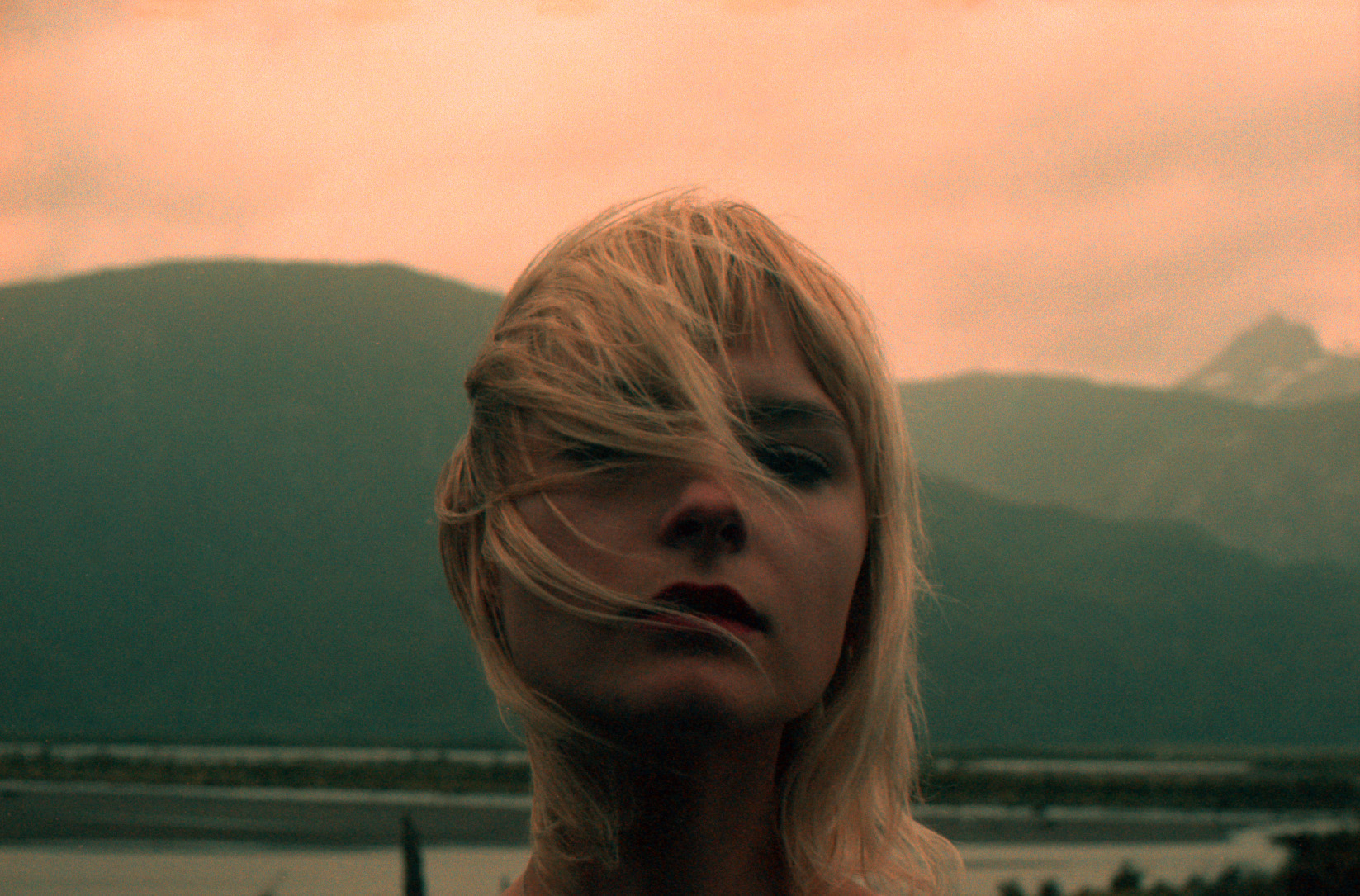
Edie
And so our journey began. Torres del Paine, our main destination, is at the very bottom of Chile—closer to Antarctica than to Santiago. We decided to take our time getting there as to not exhaust ourselves before we even arrived at our destination. We spent our first night in the artists’ dream town of Valparaiso. In Valparaiso, we recovered from a day and a half of travel and ate the best ceviche of our lives, were introduced to the famed pisco sour, and sat on the rooftop of our hotel and watched the sunset and moonrise with new friends. We shared Chilean wine and watched the landscape begin to change. At a certain point, the city looked like a galaxy: colorful and distant buildings fading into the darkness only to reveal a celestial-like shimmering of lights. We had never seen anything like it.
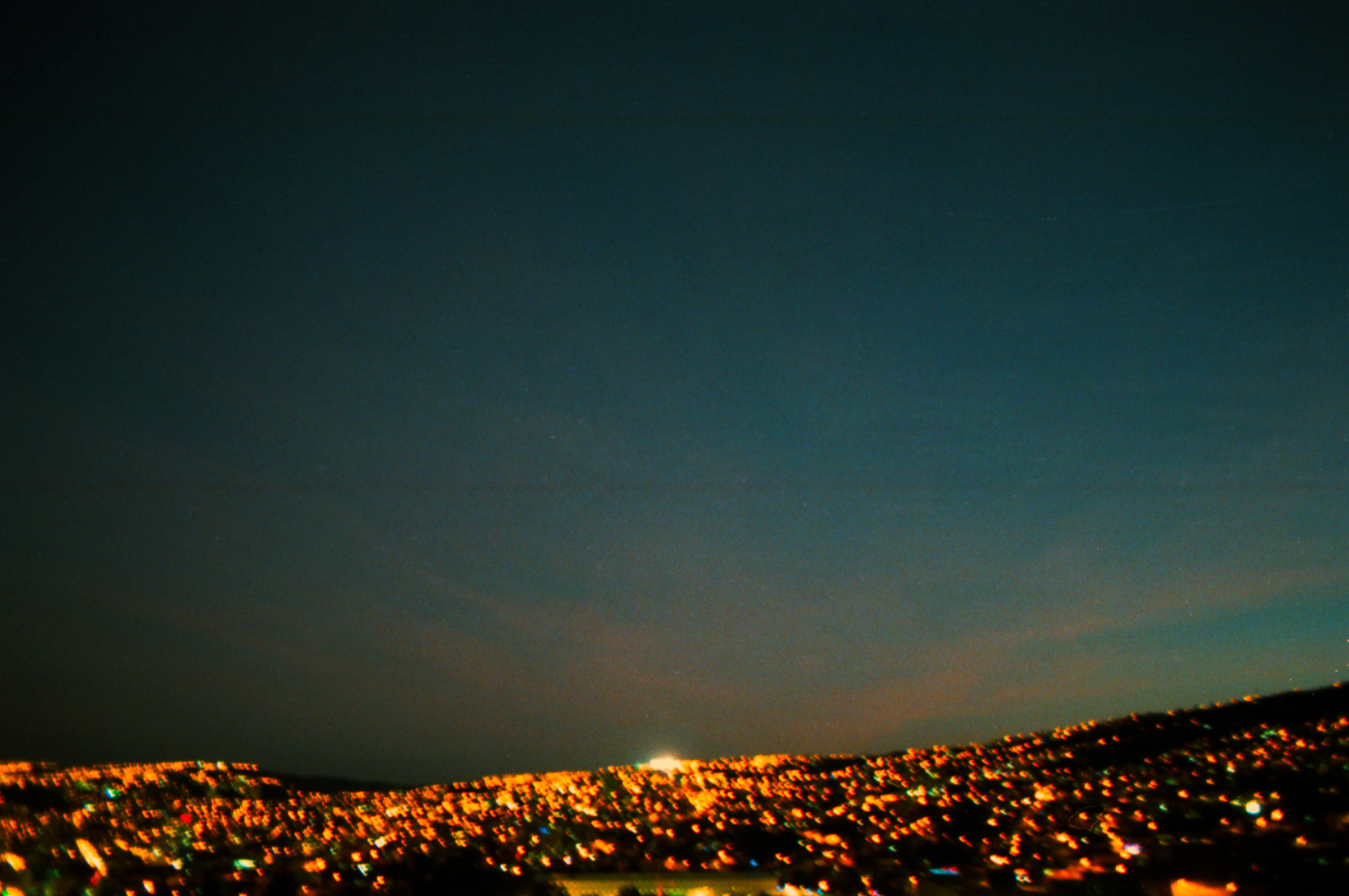
Valparaiso
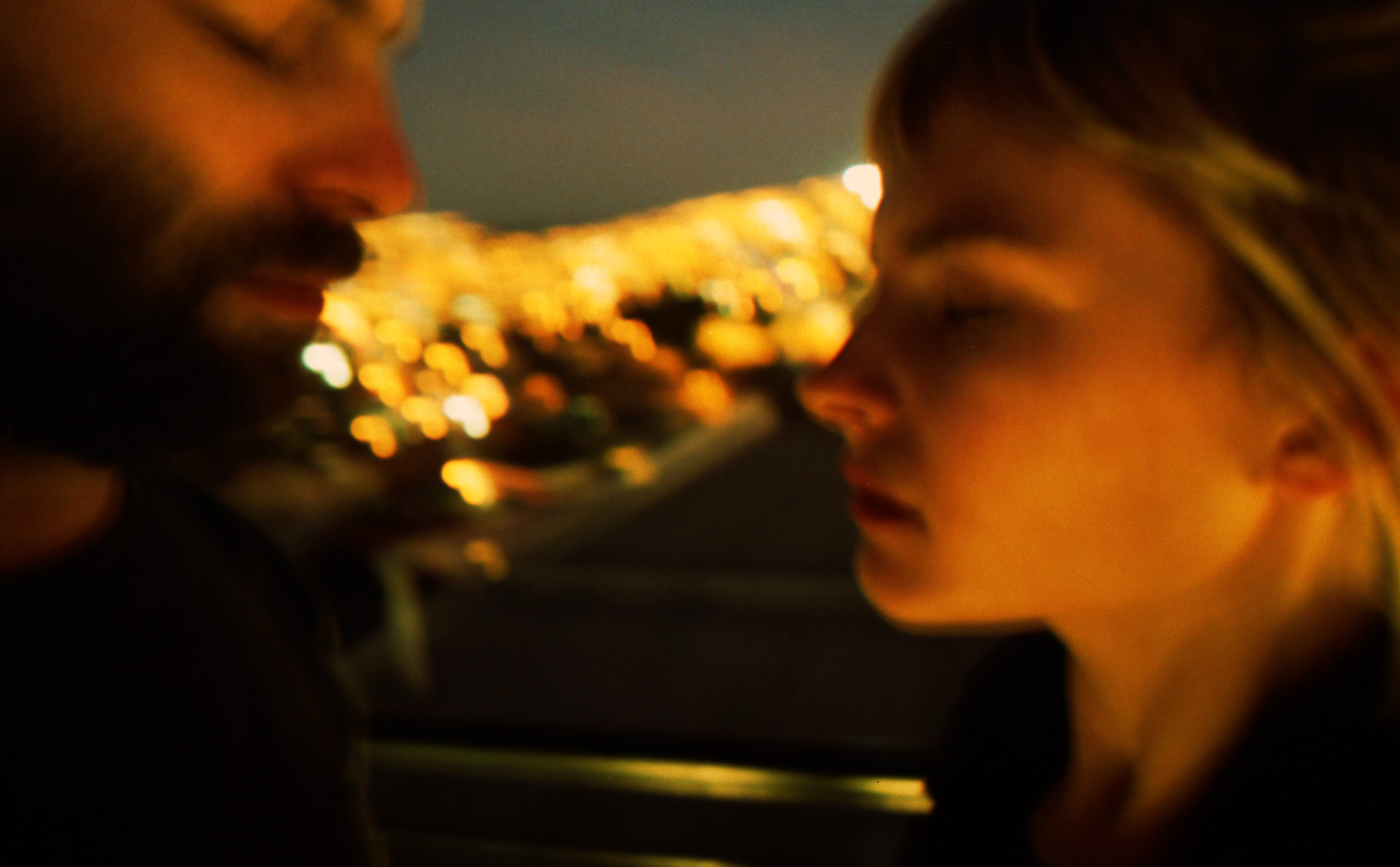
A day or so after this, and after visiting the famed wineries of the central coast, we began the journey to Patagonia. We flew from Santiago to Punta Arenas—a city located on the Strait of Magellan and on the tip of Chile’s southernmost Patagonia region. This is the only airport in Chile that allows easy access to Torres del Paine. We then drove three hours north to the fabulous town of Puerto Natales, the gateway to Torres del Paine. I had heard that the town itself was nearly as marvelous as the park, but was still stunned to see the beauty and majesty of this place. There was a feeling in the air there that I cannot put into words. Maybe it was the feeling of being so close to the edge of the world and so far away from home; maybe it was the brisk air and the smell of the turquoise Senoret Channel; maybe it was all in my head.
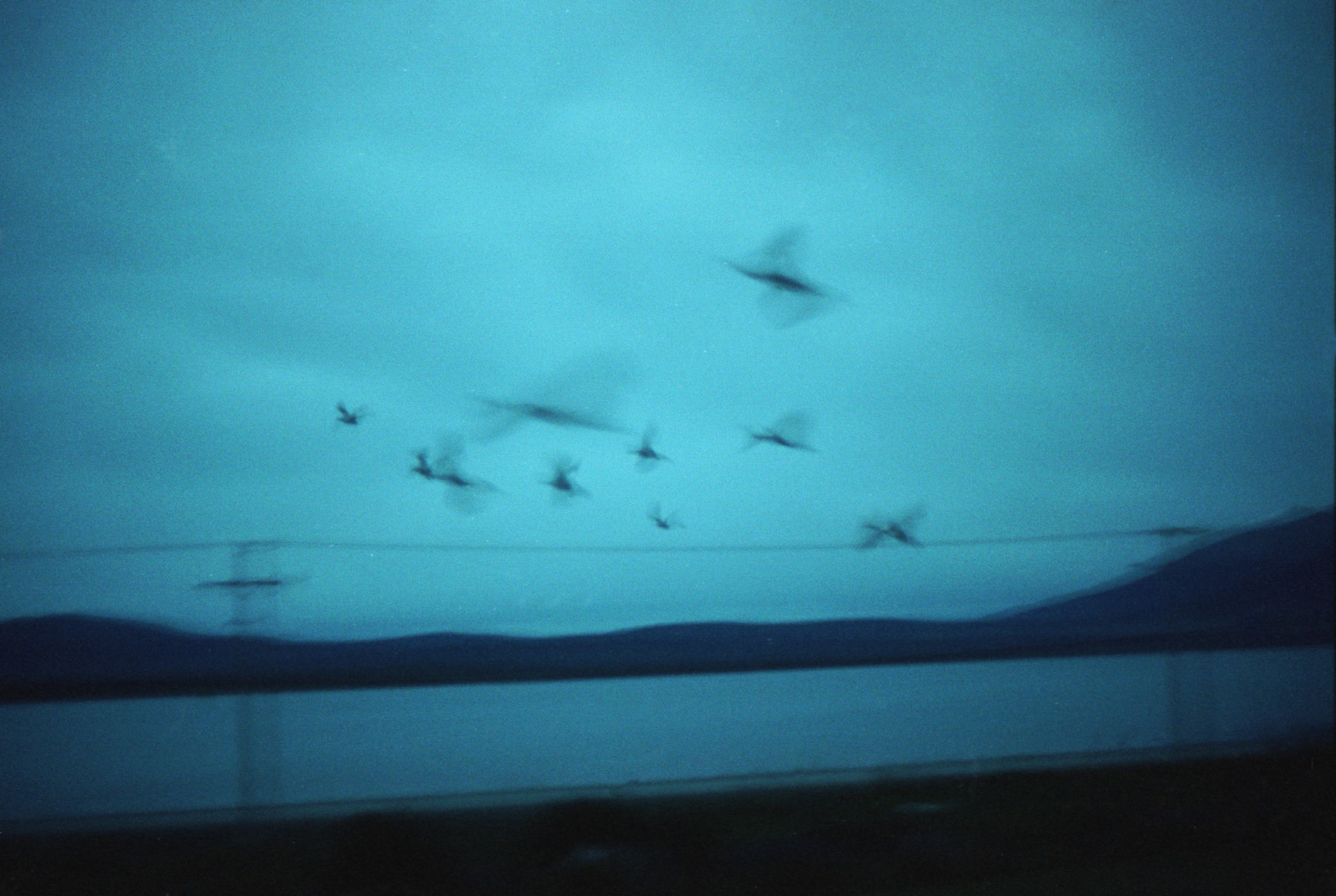
We began our journey into Torres del Paine the following day. Again, I find it hard to describe what it felt like to slowly enter Torres del Paine. I felt more gratitude than anything: Somehow I’d managed to make it to one of the worlds most beautiful and remote locations, and I didn’t even leave my own hometown until I was a teenager.
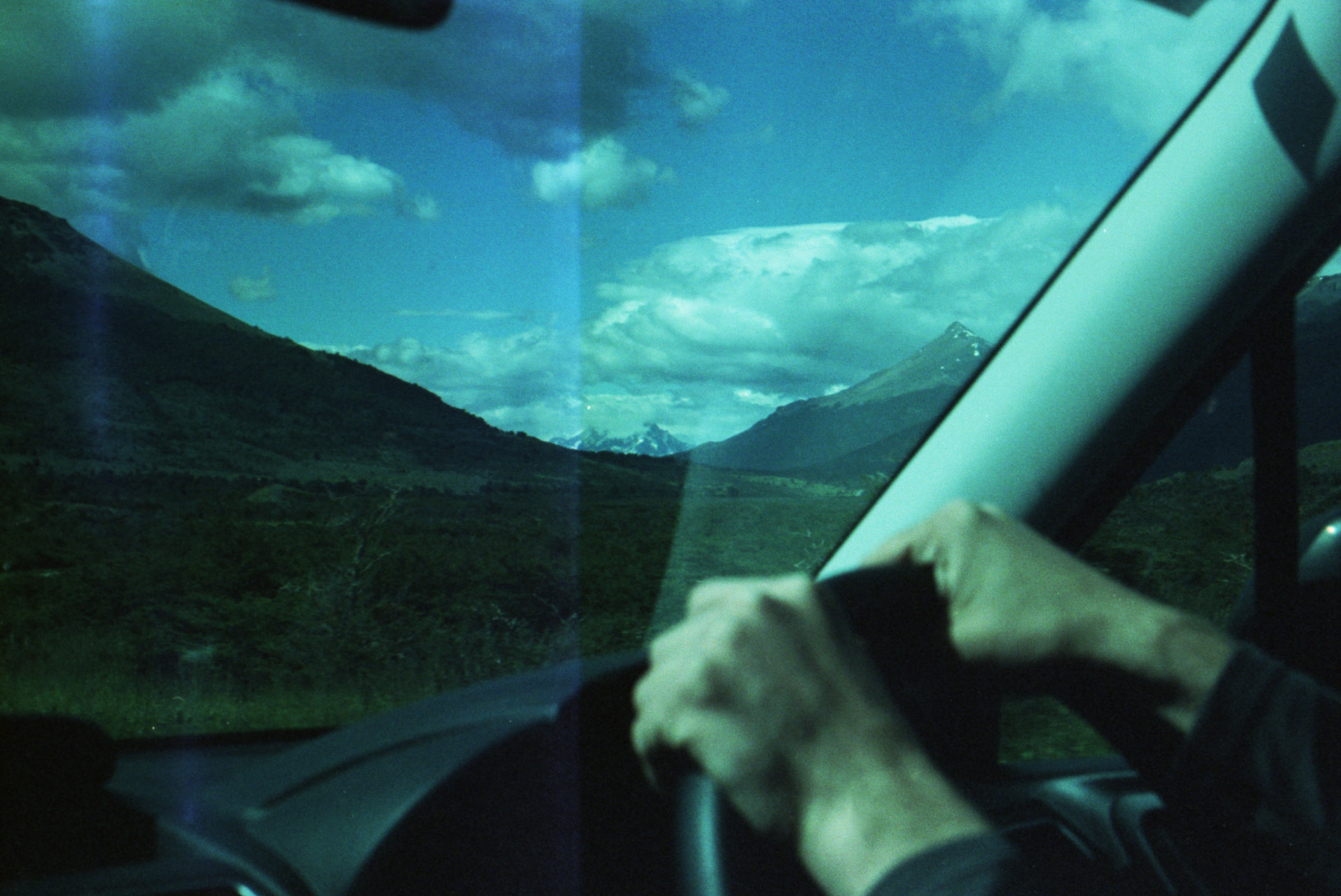
Driving
We drove and drove, and eventually we began to see the tips of the Andes and the glowing turquoise waters of Lake Pehoe. It truly was a moment of having your breath taken right out of your chest. I was blasting through rolls of film so fast I had to force myself to remember that less is more. We spent about 9 hours in the park that day (at this time of year Patagonia has about 18 hours of daylight). We traversed every road and did multiple short (1-3 hour) hikes. Although we travel, we hike, and we make art while doing so—we aren’t backpackers. So although we didn’t complete any of the “famous” long backpacking trails, we managed to see nearly every corner of the park. The wind was strong enough to pick me up off the ground and I had to exercise extra caution when hiking up the foothills. But it was a sunny, unbelievably beautiful day. The wind reminded us even more of exactly where we were in the world—a harsh, unforgiving, absolutely magical landscape. It is not for the faint of heart, but it is for those seeking something that takes you so far out of your own mind—that reshapes the way you think and feel and see by reminding you of the vastness of the earth and the smallness of yourself. I never knew these places existed until a couple of years ago—and there I was standing in the middle of my dream.
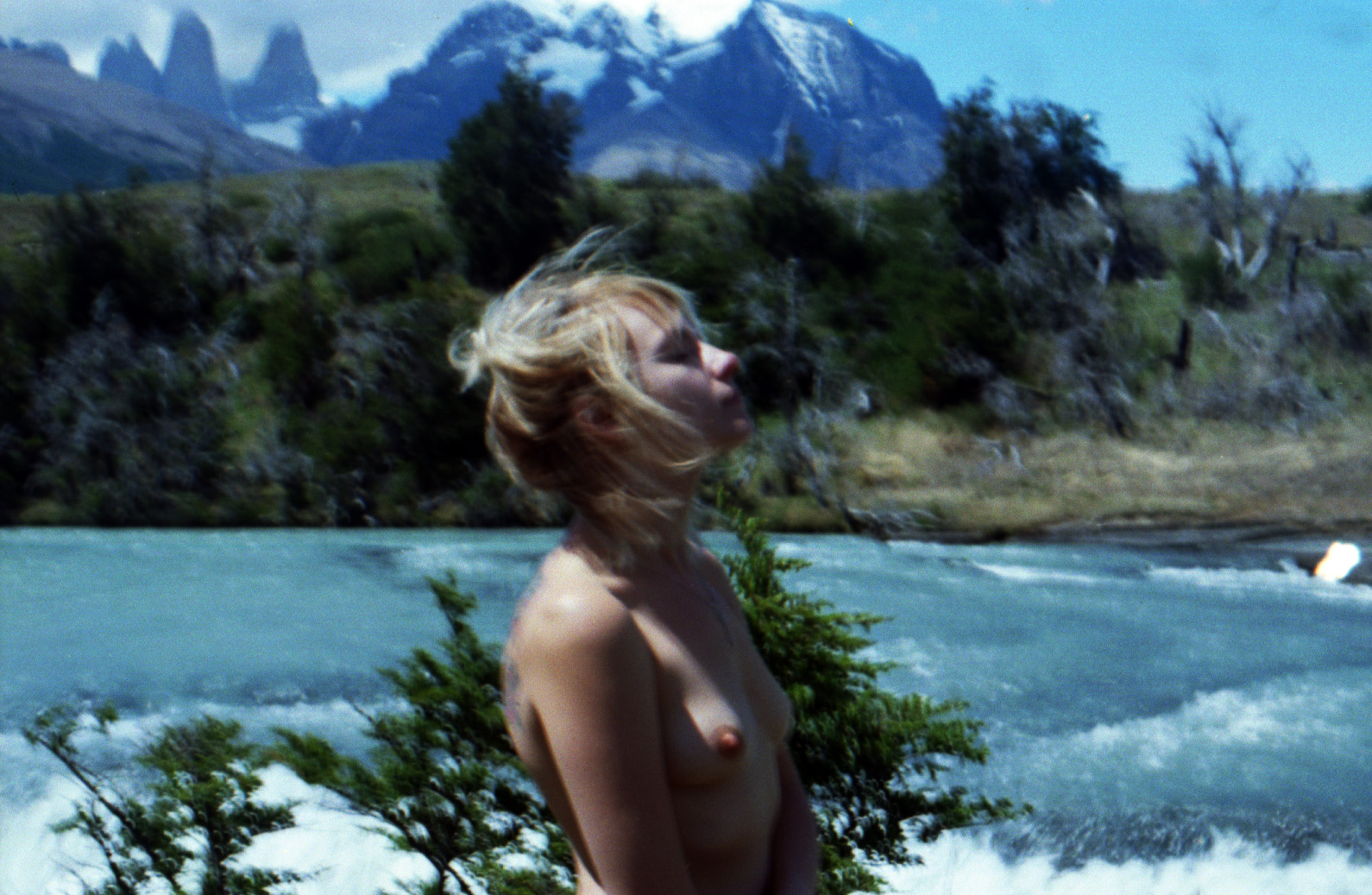
I never knew these places existed until a couple of years ago—and there I was standing in the middle of my dream.

Like a dream
Exhausted and still on a high, we embarked on our next adventure in the following days: Northern Patagonia. It feels intuitive that Southern Patagonia—at the edge of the continent—is more remote than Northern Patagonia. Wrong. We drove from Balmaceda airport to a small village on the shores of General Carrera Lake (South America’s second largest freshwater lake). We winded down one of the worlds most scenic highways for six hours, even though it is almost entirely a dirt road. We arrived in Puerto Rio Tranquillo to have dinner before continuing on one more hour to our tree house. Quickly and to our dismay we realized we had forgotten to get cash in town—and the area we were in was so remote they did not have the ability to take cards (rookie mistake). Fortunately, a kind man who ran one of the few restaurants in town gave us the benefit of the doubt and let us eat dinner, drink wine, and relax under the conditions that we bring him the cash tomorrow.
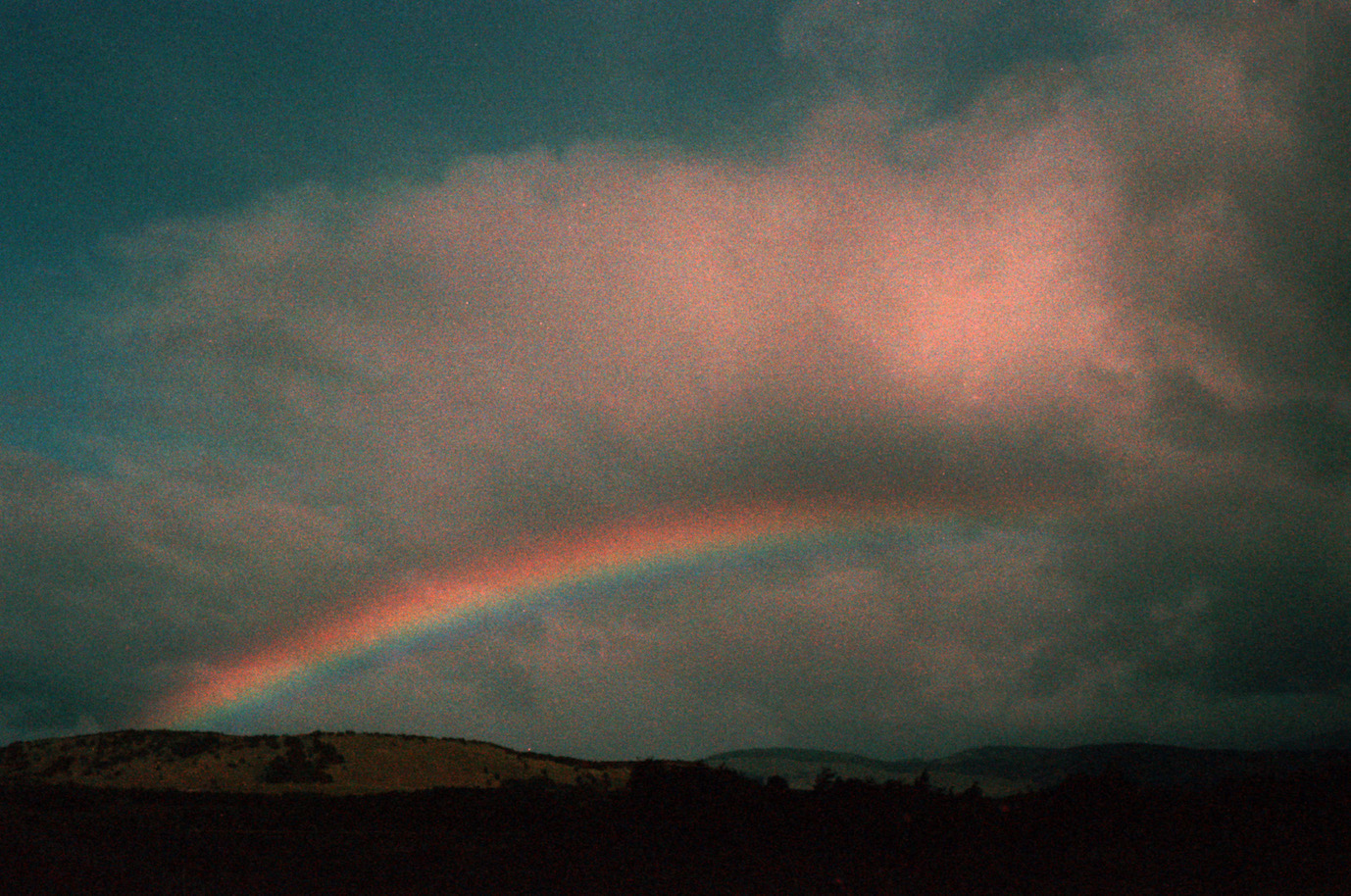
Northern Patagonia
I always say I’d never make it out alive of my travels without the kindness of strangers. The following day I almost had a heart attack when the company I had booked the kayak tour to Marble Caves with did not show up for our tour. Our sole purpose for making this arduous journey was to see the Marble Caves. The caves were formed by 6,000+ years of waves washing up against calcium carbonate and look like something out of Salvador Dali’s imagination. They are only accessible by boat or kayak, and only when the weather permits. I was nearly in tears when I realized we would not be able to go to the caves and I ran frantically from tour company to tour company asking if they took cards with no success. I walked into the last office, and the man running it could sense my despair. He made the effort to call his boss and ask if we could take the tour and pay her tomorrow. To my absolute shock, she agreed. We had been saved again.
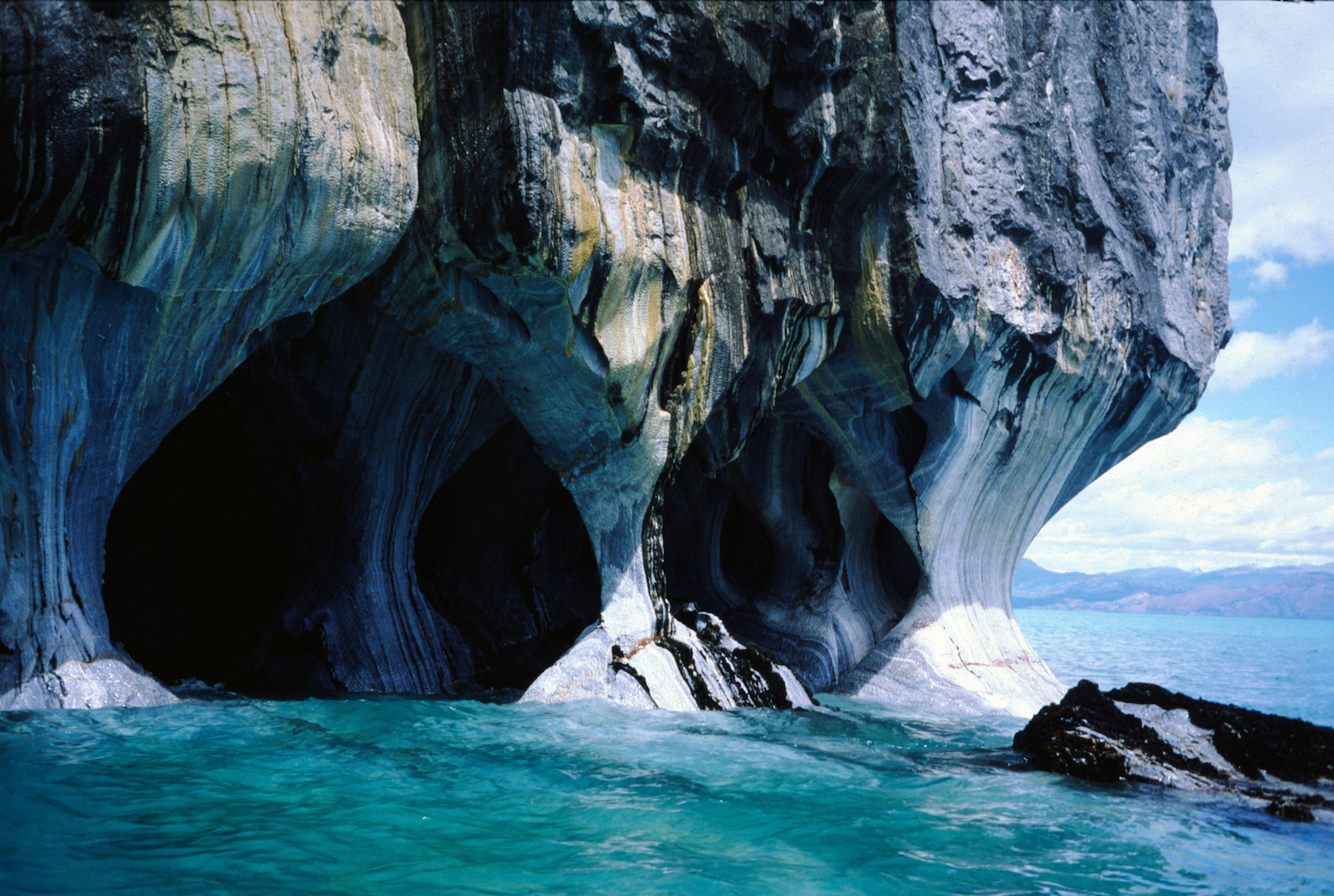
Marble Caves
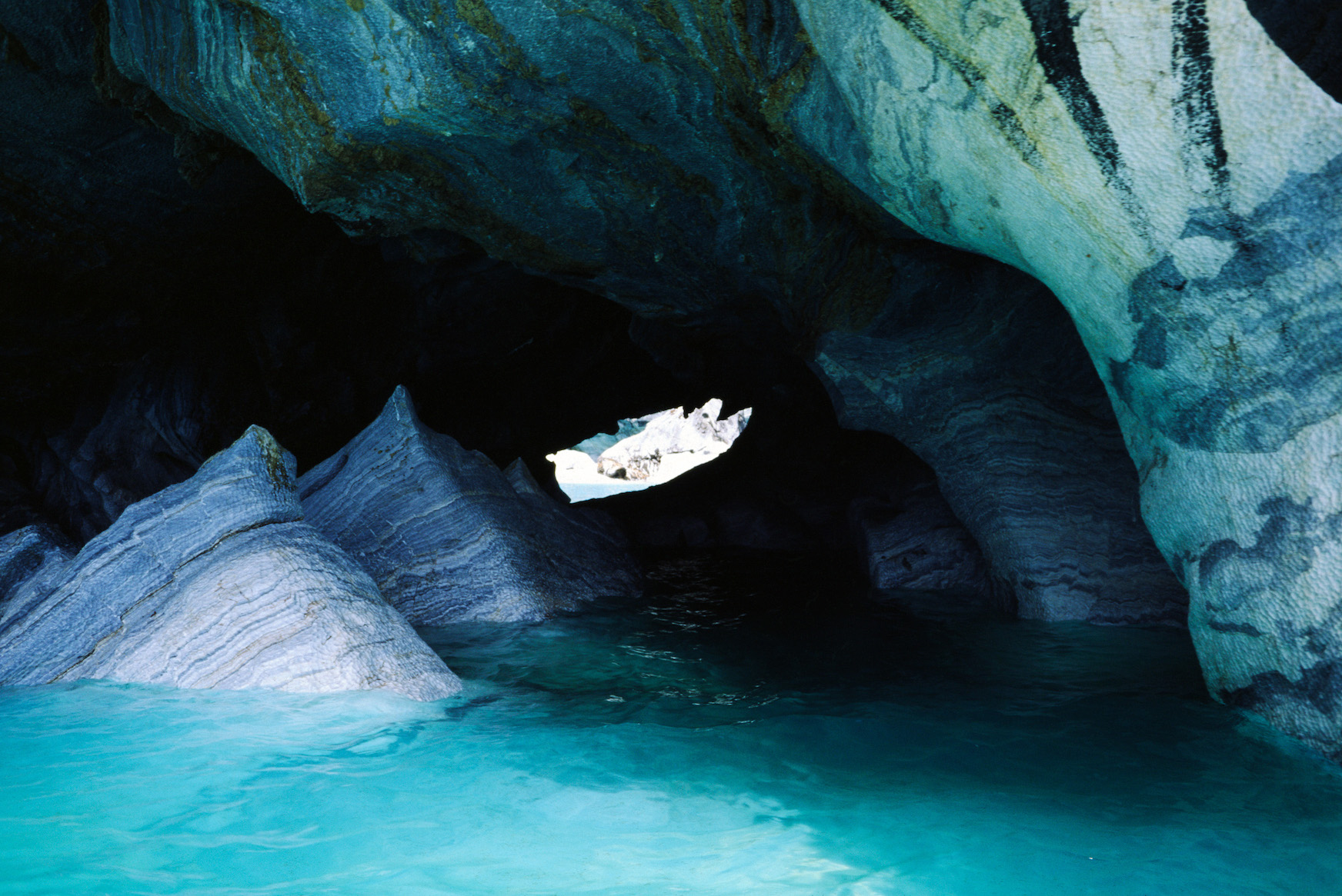
That aqua water <3
We drove to her house, and her sons took us on a 30-minute boat ride to the caves. It was too windy that day to kayak TO the caves, but they brought kayaks so that we could get out and kayak through the caves once we arrived. I’m still not sure what was more stunning– the first sight of the Patagonian Andes in Torres del Paine or the first sight of the marble caves. Only the photos can do justice to these places.
Kayaking through the caves was difficult as the wind was in full force, and I got stuck on marble many times. I was dying to take photos, but also struggling with my all-the-time internal battle of “be here now” or “make art.” Interestingly, I can still remember the smell, the feeling, the cold, the dark and light, the blue, my soaking boots, wind chapped lips, all of it. But the photos look like someone else’s photos to me. My sensory experience became more salient with time and the photos—so crisp and clear—feel more and more distant from my true experience.
I can still remember the smell, the feeling, the cold, the dark and light, the blue, my soaking boots, wind chapped lips, all of it.
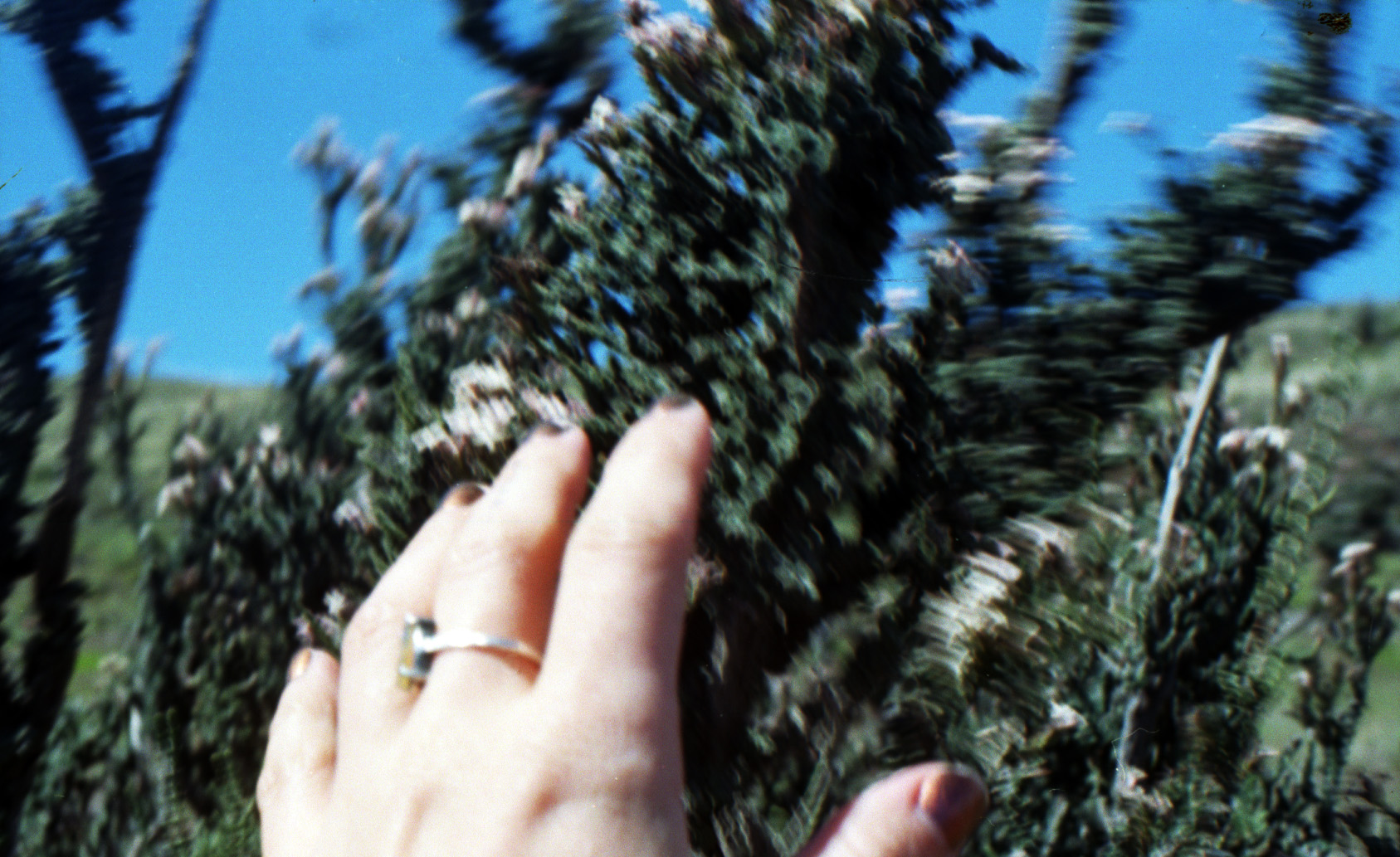
Many of the photos you see were taken on our last day in Chile, driving the six hours back down the dirt road to the airport. On this particular day the wind was stronger than it had been yet, and sometimes I couldn’t even step out of the car without being thrust back into it by the wind. But when I got the chance, I framed the shot and let my boyfriend fire the shutter and went running into the wide-open spaces, breathing in the air and not minding the cold rain whipping my body. There was scarcely a soul in sight, so I did my favorite thing—which is to be nude surrounded by the vast and open earth. These are the rawest moments of being human for me, and some of the only times I am able to understand the meaning of the world “spiritual.”
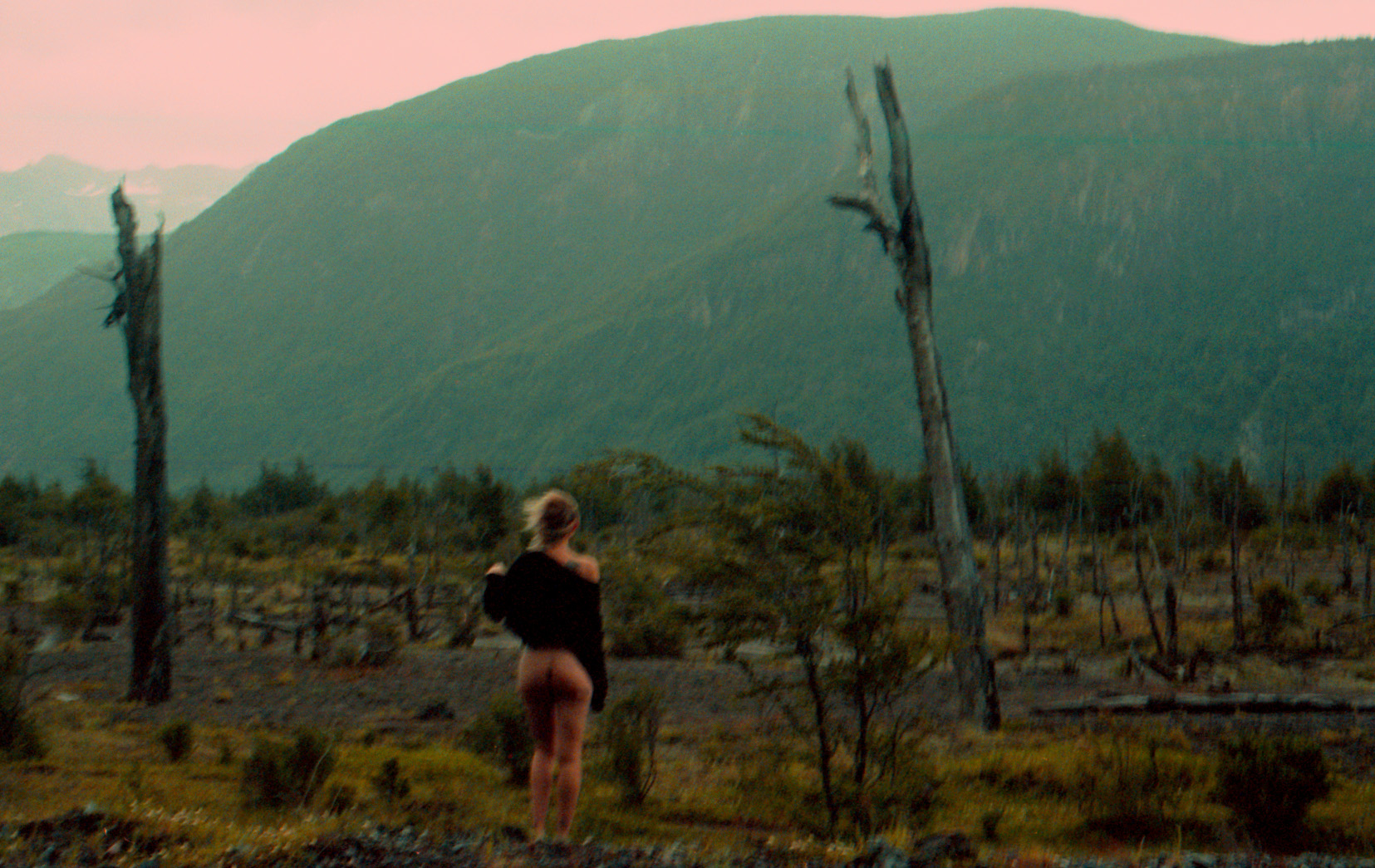
Edie
Edie Sunday is an analog art photographer. You can find more of her work on her Instagram, @ediesunday.
Be the first to comment